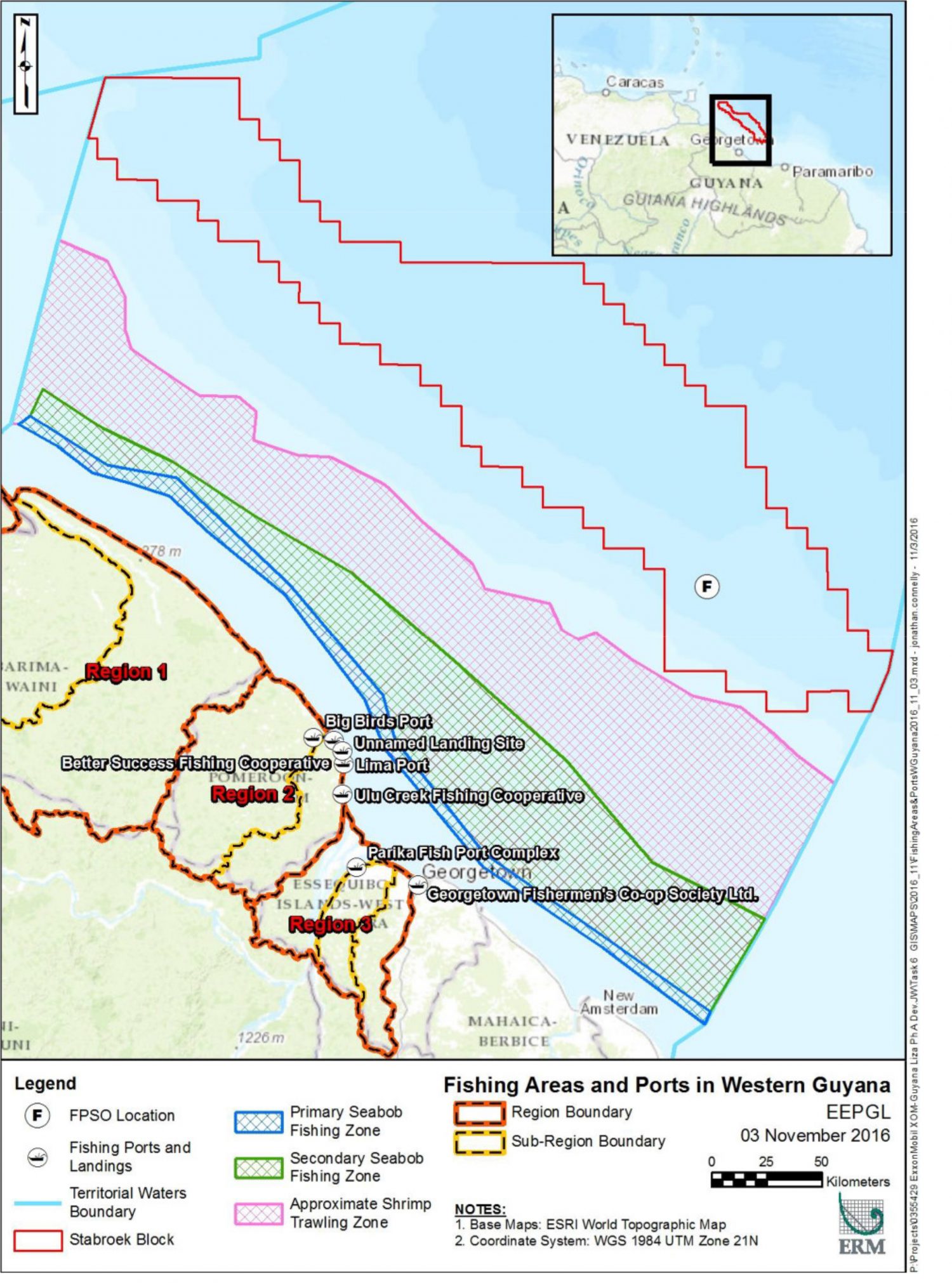Seeking to assuage concerns that its operations would severely restrict fishing offshore, ExxonMobil says that the two-mile exclusion zone within its Stabroek Block offshore operations will have only a minute impact on commercial fishing.
“There is a very small exclusion zone around those boats (floating production, storage and offloading [FPSO] platforms). For safety reasons, you can’t come too close to the drilling ship during active operations,” Public Relations Officer of the company, Kimberly Brasington yesterday said.
There have been concerns raised during public scoping meetings organized by the Environmental Protection Agency (EPA )and the company over how operations will affect the marine life with more recent concerns being raised that the company has restricted fishing over a large mass offshore.
Using a map outlining the country’s fishing areas and ports the company rejected positions that its restriction would be impactful. It explained that the total area of the Guyana offshore is 144,650 sq. km from shoreline to the exclusive economic zone (EEZ) boundary and its two nautical mile exclusion zone (43.1 sq. km) restricts 0.000297 or 0.03% of the Guyana offshore.
While Brasington said that the entire Stabroek Block was open to fisherfolk, she noted too that it is in an area of relatively little fishing since it is in deep-water and requires deep line vessels to gain access.
The closest zone to Exxon’s current Stabroek Block operations was that of shrimp trawling.
However, there has been an interest by at least one local fishing company in tuna catching for commercial purposes and that could be done in the deep-shore area within the Stabroek Block.
Brasington said that there is no restriction on fishing within the Stabroek Block area but for safety there would be a two-mile safety buffer range around the area that the FPSO is working.
So insignificant the company believes is the safety zone that it says that “it would take 34 FPSOs with similar exclusion zones before we’d get to the point of restricting 1% of the offshore”.
On their ExxonMobil Guyana Facebook page they add, “Our operations in 2020 will have a two nautical mile radius marine safety exclusion zone…minimal in comparison to the size of Guyana’s marine environment still available for fishing activities. Our operations are 190km offshore and it has been observed that most fishing activity in Guyana is well inshore of our Project Operation Area.”
While the fishing restriction has been the latest issue raised as it pertains to effects of the company’s offshore drilling, a major issue still surrounds disposal of hazardous waste, including large quantities of production brine and drilling fluids, and the overall effects drilling and production would have on marine life.
With a projected 4,000 to 5,000 tonnes of hazardous waste, not including production brine, expected to be produced annually from the project, scientist Alfred Bhulai has been pressing to know where it would be stored or disposed of and if this country’s water system was at risk of contamination.
Businesswoman Allison Butters-Grant, who is present at most of the EPA and ExxonMobil’s public outreaches in the capital and represents the fishing industry at those forums, has suggested that the EIA include a study of where fish can be tested for levels of mercury. She also said that the study should include how marine traffic will be affected since other vessels will also be using the waterway.
It was also suggested that the study include how the project will affect the migration pattern of some species of fish.
Fearing that an oil spill from production by the company could devastate the fishing and agricultural industries, fishermen and farmers from Upper Corentyne, Berbice have also called for an impact analysis of such a drill spill and insurance coverage to protect their livelihoods.









